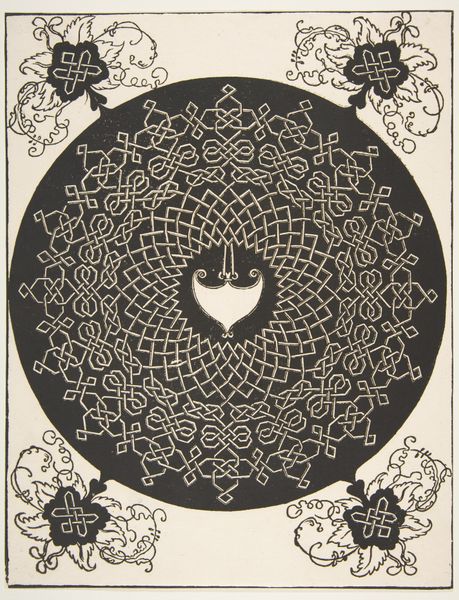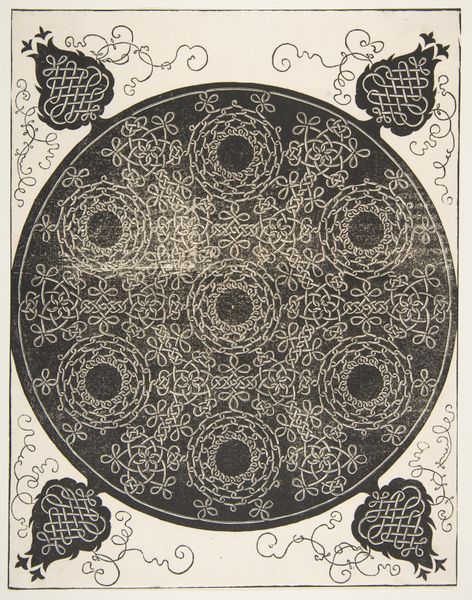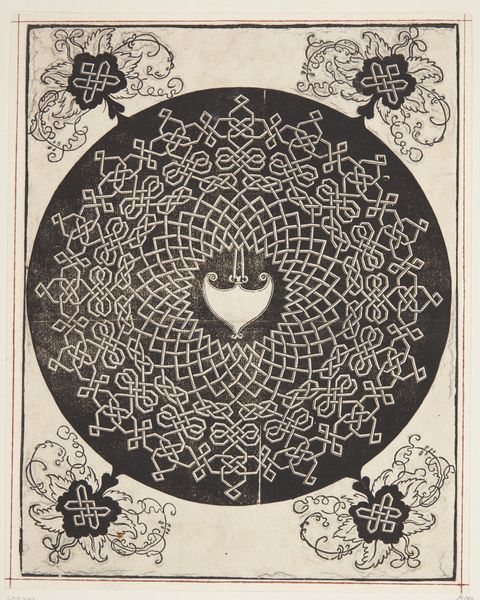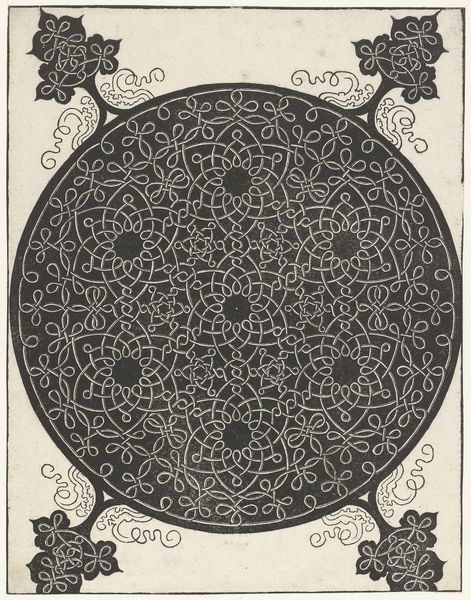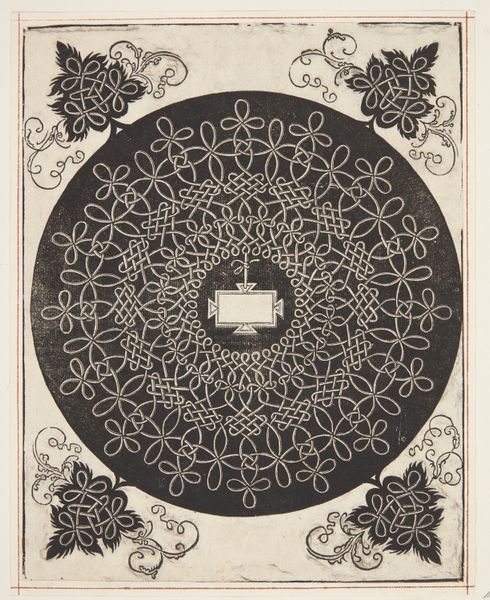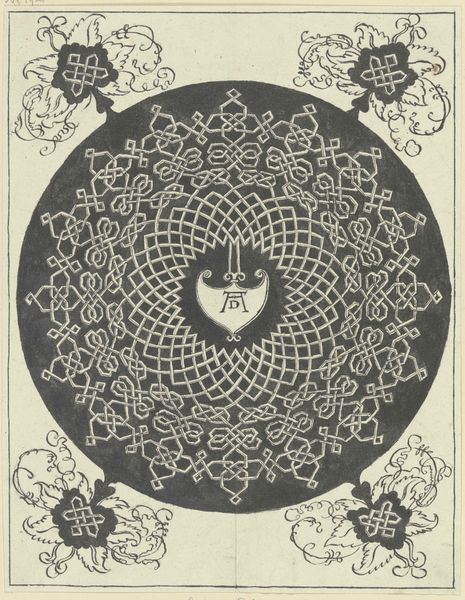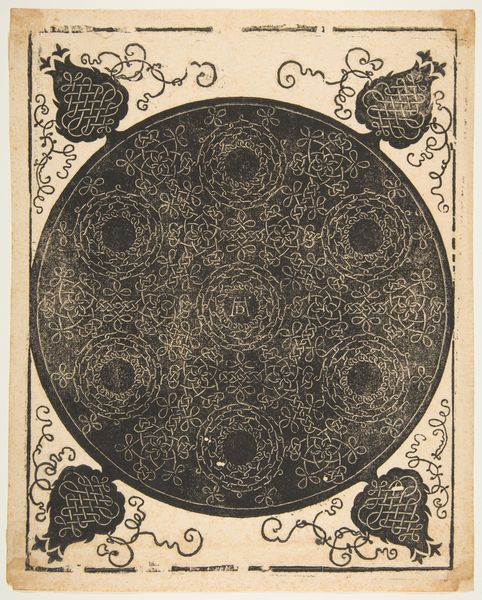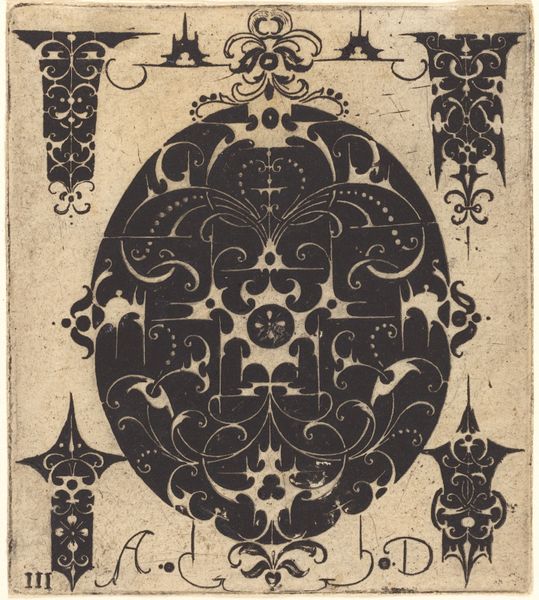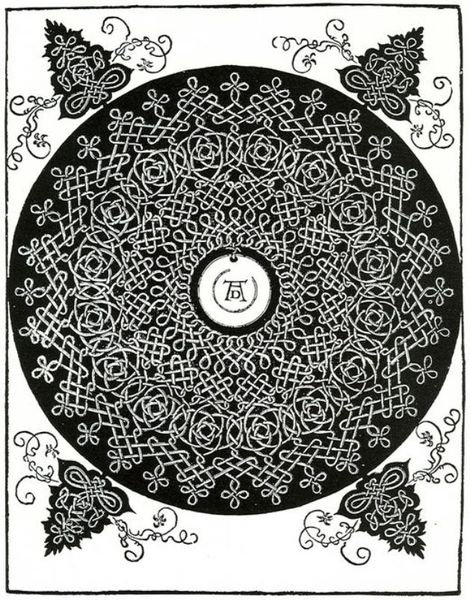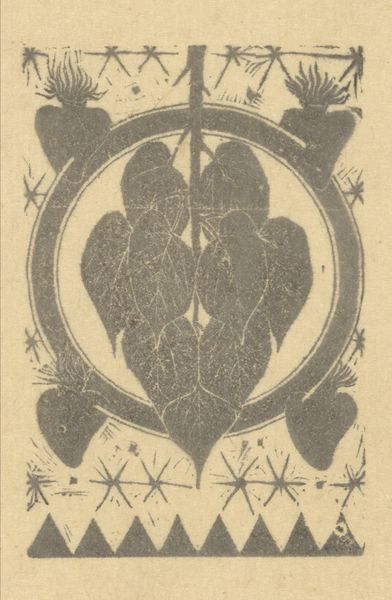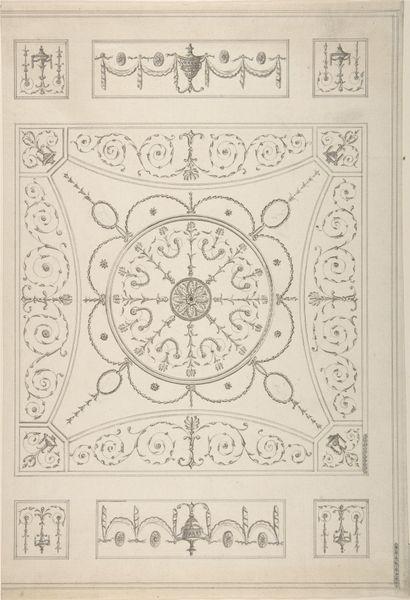
“The Third Knot”. Interlaced Roundel with Eight Wreaths and a Scalloped Shield in its Center 1500 - 1521
0:00
0:00
drawing, ornament, print, woodcut
#
drawing
#
ornament
# print
#
11_renaissance
#
linocut print
#
organic pattern
#
geometric
#
woodcut
#
intricate pattern
#
northern-renaissance
Dimensions: sheet: 10 3/4 x 8 3/8 in. (27.3 x 21.3 cm)
Copyright: Public Domain
Editor: Today we're looking at Albrecht Dürer's “The Third Knot,” created sometime between 1500 and 1521. It's a woodcut print, a fascinating maze of interlaced wreaths. It's incredibly detailed! It looks like something you might find decorating a grand hall or perhaps emblazoned on a knight’s shield. What do you see in this piece? Curator: It's interesting you mention a knight’s shield, because, beyond its decorative appeal, prints like this played a significant role in disseminating imagery and ideas during the Renaissance. The question is not only what do I *see*, but what did its original audience *see*? Were they appreciating the intricate geometric design simply for its beauty? Or did these symbols represent family crests, civic pride, and loyalty? Consider the context: the rise of the printing press democratized art. Editor: So, prints weren’t just aesthetic objects but a means of communicating social status? Curator: Precisely. Dürer wasn't merely creating "art" as we understand it today; he was producing visual tools, contributing to the construction and reinforcement of social hierarchies and identity. This roundel would have been chosen as part of the image making the commissioner was pursuing for themselves. Editor: That's fascinating. I hadn't considered the political implications of something that seems purely decorative. It makes me wonder how artists today are participating in the same way. Curator: And that's precisely the point. Understanding the historical function of an artwork helps us analyze its social impact, even centuries later. Editor: Thanks! It really changes my perspective on the function of the art. Curator: My pleasure! This also prompts thinking about today's public art and its engagement.
Comments
No comments
Be the first to comment and join the conversation on the ultimate creative platform.
